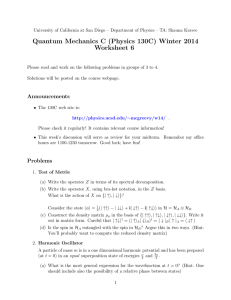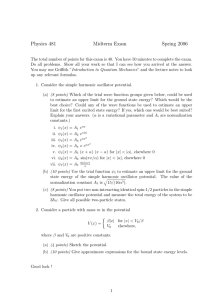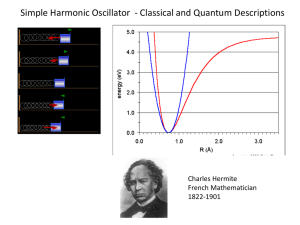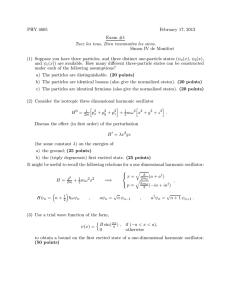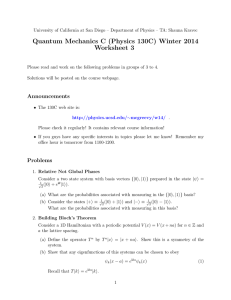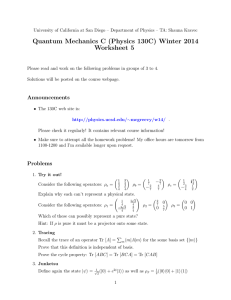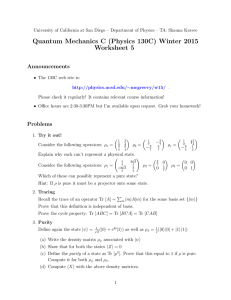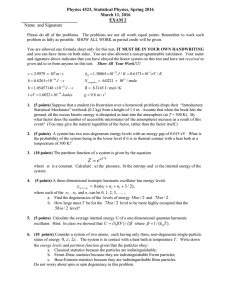Quantum Mechanics C (Physics 130C) Winter 2015 Worksheet 3 Announcements
advertisement
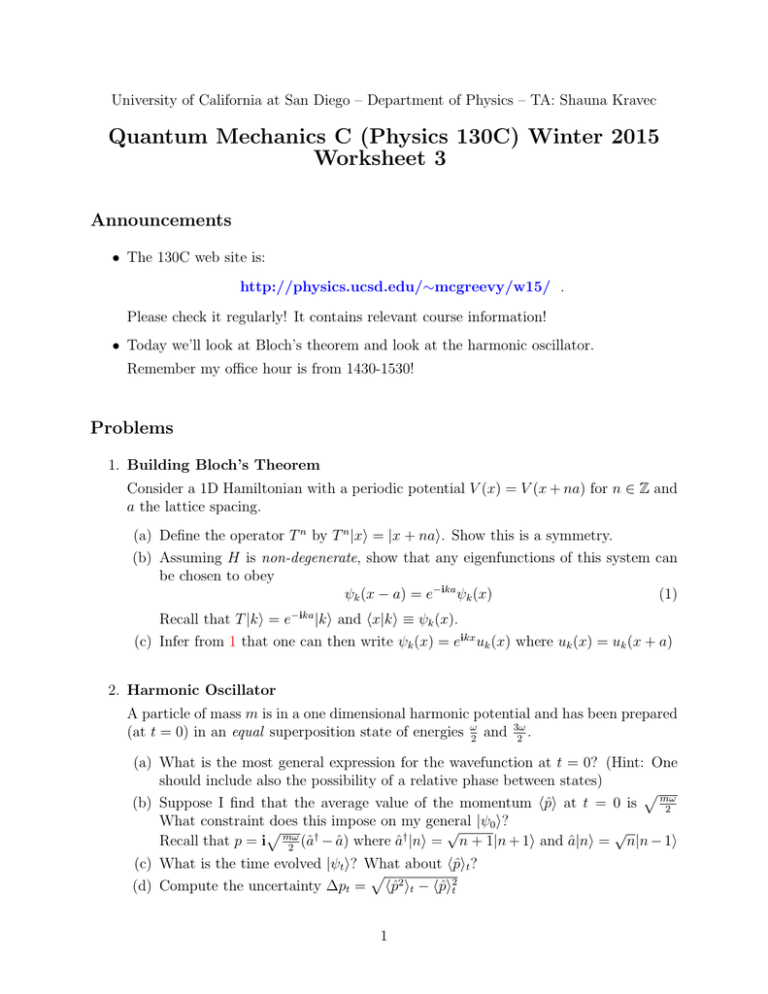
University of California at San Diego – Department of Physics – TA: Shauna Kravec Quantum Mechanics C (Physics 130C) Winter 2015 Worksheet 3 Announcements • The 130C web site is: http://physics.ucsd.edu/∼mcgreevy/w15/ . Please check it regularly! It contains relevant course information! • Today we’ll look at Bloch’s theorem and look at the harmonic oscillator. Remember my office hour is from 1430-1530! Problems 1. Building Bloch’s Theorem Consider a 1D Hamiltonian with a periodic potential V (x) = V (x + na) for n ∈ Z and a the lattice spacing. (a) Define the operator T n by T n |xi = |x + nai. Show this is a symmetry. (b) Assuming H is non-degenerate, show that any eigenfunctions of this system can be chosen to obey ψk (x − a) = e−ika ψk (x) (1) Recall that T |ki = e−ika |ki and hx|ki ≡ ψk (x). (c) Infer from 1 that one can then write ψk (x) = eikx uk (x) where uk (x) = uk (x + a) 2. Harmonic Oscillator A particle of mass m is in a one dimensional harmonic potential and has been prepared (at t = 0) in an equal superposition state of energies ω2 and 3ω . 2 (a) What is the most general expression for the wavefunction at t = 0? (Hint: One should include also the possibility of a relative phase between states) p mω (b) Suppose I find that the average value of the momentum hp̂i at t = 0 is 2 What constraint does this impose on my general |ψ0 i? √ p √ Recall that p = i mω (↠− â) where ↠|ni = n + 1|n + 1i and â|ni = n|n − 1i 2 (c) What is the time evolved |ψt i? What about hp̂it ? p (d) Compute the uncertainty ∆pt = hp̂2 it − hp̂i2t 1
